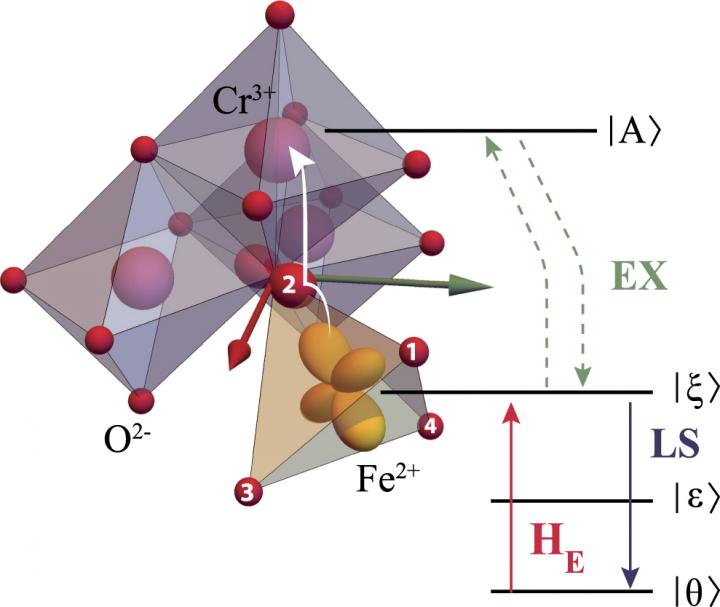A paper by Kazan Federal University saw light in Journal of Physics: Condensed Matter
The researchers developed a microscopic theory of magnetoelectric effect involved Fe2+ and Cr3+ spins. They found two effective mechanisms: the single-ion which demands at least a short-range order of Fe spins (spin-liquid or spin-glass, for instance), and the two-ions mechanism, where the canting between Fe and Cr spins is required. Both reproduce the existing experimental data on the electric polarization measurements by the order of the magnitude and the optical absorption spectrum.
Multiferroics are fascinating multifunctional materials which have a wide range of applications in electronics and spintronics, such as actuators, new types of non-volatile energy efficient memory, electric valves driven by magnetic field. etc. Putting this simply, we can magnetize the medium using electric field and vice versa. Magnetoelectric coupling depends on many competing interactions, and the theory is still unclear. The paper provides a method of calculations of the magnetoelectric and electron-deformation coupling parameters for 3D ions. The latter is also used to calculate magnetostriction, which is important for building sensors (like sonars) and actuators.
One of the important consequences is that the magnetic anisotropy can maintain not only the magnetic “memory”, but also the electric “memory” of the material. The spin structure must have no inversion symmetry to maintain the electric polarization in the ground state. Also, the interplay of electric and magnetic domains may have a significant impact on electric polarization. To solve these issues, it is necessary to study the magnetic subsystem more accurate as well, which is unclear due to the lack of the experimental data and the complexity of the compound.
###
Media Contact
Yury Nurmeev
[email protected]
Original Source
https:/
Related Journal Article
http://dx.





